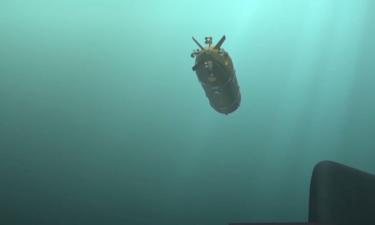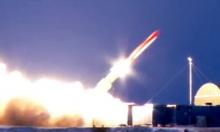Mars' new discovery baffles NASA
NASA will announce on Tuesday what it says are more "significant scientific findings" from its rover Opportunity. The Martian explorer has already found its landing site at Meridiani Planum to have been "drenched" in water at some time in the Red Planet's history. The vehicle has been studying the rocks in a small depression known as Eagle Crater since its arrival in January. Although the rocks have obviously been altered by water, scientists want clear evidence they were created in water.
To confirm the thin beds studied by the rover are indeed sedimentary rocks laid down in similar water-borne processes to those on Earth would be a major milestone in Mars exploration. Opportunity has now moved out of Eagle Crater to explore the surrounding plain.
From orbit, this area appears to contain vast quantities of grey haematite, an iron-bearing mineral which on Earth normally forms in the presence of water.
US space agency scientists suspect the source of this haematite signature may be the small spherules, or blueberries as they have been dubbed, found in the crater's layered rock and on its floor, according to BBC.
Mars Exploration Rover scientists and engineers designed the spacecraft to search for evidence that water once lay on or flowed across the Martian surface, because water is an essential ingredient for life. So far, the evidence has come in the form of sedimentary rock discovered by Opportunity in an area called Meridiani Planum, and from the European Mars Express orbiter, which as detected water ice at the Martian south pole, inform Washingtontimes.com
"After completing the drive out of the crater, the navigation camera imaged Opportunity's brand new view of the plains of Meridiani Planum," controllers reported Monday.
"During the martian night, rover planners will awaken Opportunity to take miniature thermal emission spectrometer observations of the ground and the atmosphere."
"Eagle Crater" is approximately 22 meters (72 feet) in diameter. Opportunity has thoroughly examined the exposed bedrock and soil samples within the crater over the past two months, providing scientists with enough data to determine that the site was once drenched in water.
Opportunity's long-range goal is driving across the plains to a much larger crater in the distance, report Spaceflightnow.com
As was already reported by Pravda.Ru US space probes Spirit and Opportunity are outfitted with the mentioned alpha sources - the probes were launched on a mission to Mars on June 10th and July 8th from Florida. There were 120 alpha sources produced in total, each of them are the size of a small coin, they are covered with a thin layer of curium-244.
Twelve of the sources (six for each probe) have been launched into space, the rest of them were used for tests.
Related links: PRAVDA.RU &to=https://english.pravda.ru/science/19/94/379/10464_mars.html' target=_blank>American Mars Probes Outfitted with Russian Equipment
Subscribe to Pravda.Ru Telegram channel, Facebook, RSS!




